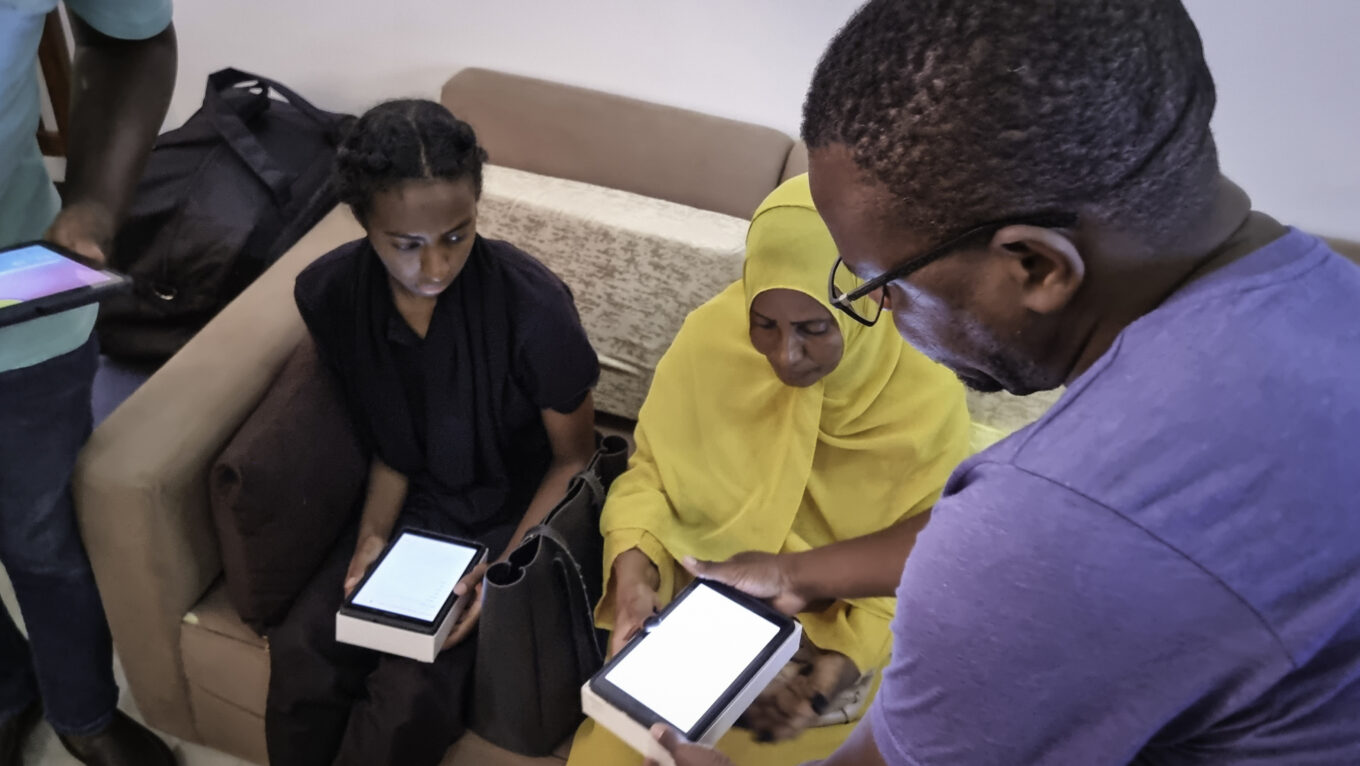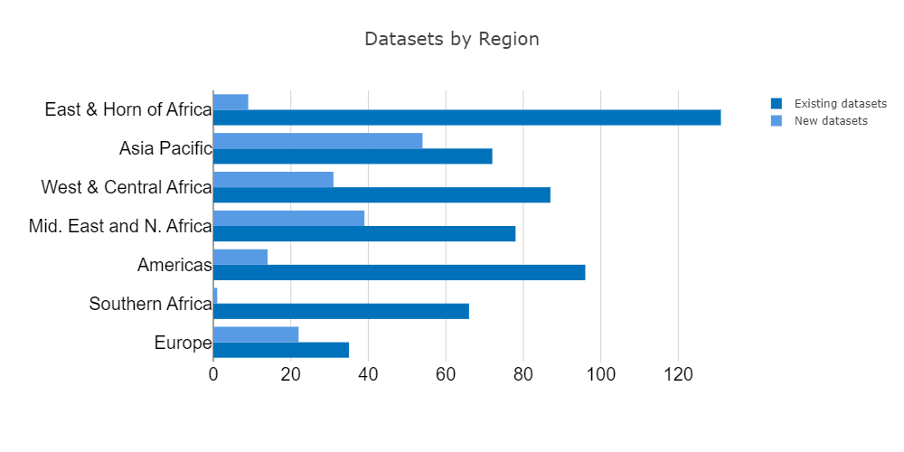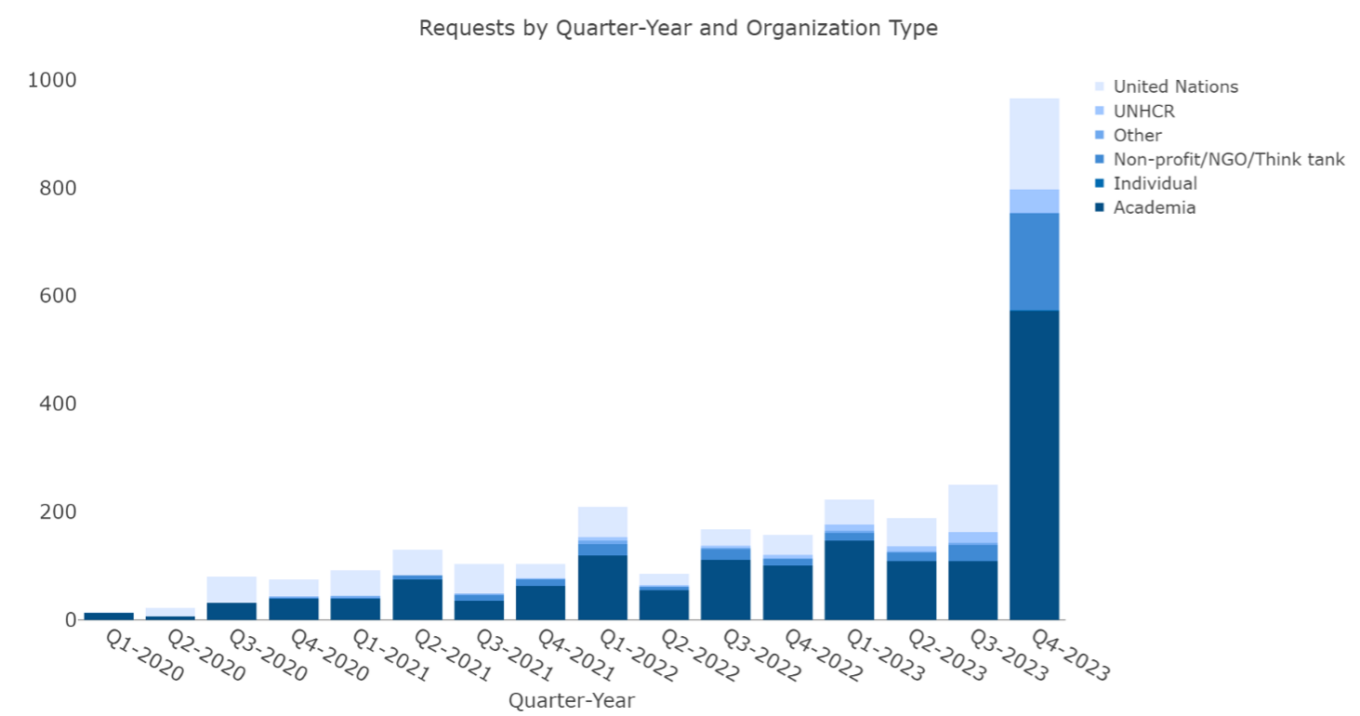
By Andrea Pellandra, Lauren Herby, and Alejandra Moreno Ramirez, Global Data Service
In 2023, UNHCR marked a significant milestone in its consistent commitment to the responsible management and use of personal microdata of forcibly displaced and stateless people. The accomplishments of the triennium 2020-23 paved the way for the adoption on January 1, 2024, of a new policy on the Curation of Personal Microdata of Forcibly Displaced and Stateless People. This document institutionalizes previously used methods and procedures and defines roles and responsibilities for the responsible internal management and publication of anonymized microdata on UNHCR’s Microdata Library.
The curation of personal microdata essentially involves systematically integrating data from multiple sources into a common system with appropriate documentation, so that it is readily available and reusable for data analysis. As part of its international protection mandate, UNHCR collects and processes thousands – possibly more! – of personal microdata elements daily across global forced displacement and statelessness situations. This sensitive data, rich in insights on displacement contexts, vulnerabilities, socioeconomic conditions, and specific needs, directly informs protection and solutions interventions. Subsets of properly anonymized data are then securely shared for analytical and research purposes on UNHCR’s Microdata Library. This exponential increase in evidence-based knowledge can potentially guide policy decisions to improve the lives of displaced populations by ensuring that we respond effectively to constantly changing situations on the ground.
UNHCR’s Microdata Library is the public portal for accessing anonymous microdata collected by UNHCR and its partners, in support of evidence-based programming and policy making, bridging humanitarian and development agendas. Today, the Microdata Library includes 734 datasets covering over 70 countries, of which 170 were newly published in 2023 (refer to Figure 1 for breakdown by region).

Parallel to the increase in data availability, in 2023 UNHCR’s Microdata Library experienced a surge in user engagement. In the month of December of 2023, the Library’s webpage garnered over 10,000 pageviews. Additionally, in 2023 there were over 1,600 requests to download data, predominantly originating from academic institutions, reflecting the library’s vital role in scholarly research and analysis (refer to Figure 2 for a detailed breakdown by user type). The impact of the Microdata Library extends beyond academia, as evidenced by its citations in professional publications. For example, the Human Rights Watch report on the protection situation in the Darien Gap used the microdata set “Darien Border Protection Monitoring, 2022 – 20223” currently available in the Microdata Library. This highlights the potential for re-using humanitarian microdata to stimulate innovative research, inform and shape discussions and timely policy decisions beyond its original purpose and for other sectors such as human rights and development.

In conclusion, the advancements of 2023 signify a leap forward in managing and utilizing microdata at UNHCR. With the implementation of an institutional policy, we are entering a new chapter of improved data collection, processing, anonymization, and publication. As we look into the future, we anticipate that these developments will improve data quality, increase the quantity of microdata publicly available, and broaden the impact of research and analysis on forcibly displaced and stateless people. And we are not stopping there!
As we look ahead to 2024, an exciting development on the horizon is the integration of thematic data into the existing Refugee Data Finder . With the financial support of the Joint Data Center on Forced Displacement, the Global Data Service has embarked in a new project to curate and publish key indicators critical to understanding the living conditions of forcibly displaced and stateless populations including indicators on protection, socioeconomic conditions, health, and more. These will be made available alongside the currently available demographic and resettlement data in an easy-to use data platform. We eagerly anticipate the rollout of the new platform and its complementarities to the Microdata Library and other indicator data platforms.
